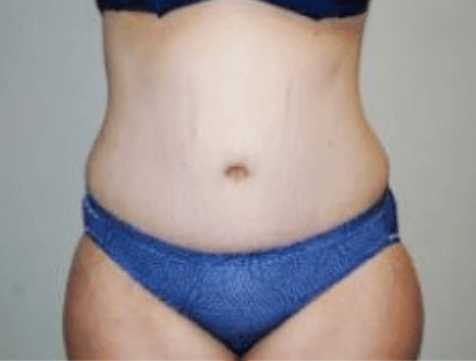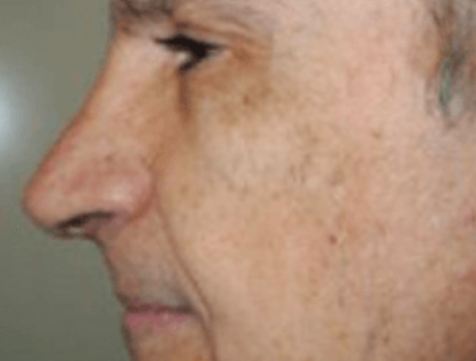Are you considering getting a rhinoplasty? It’s natural to have questions about this transformative procedure. As a leading plastic surgeon in Newport Beach, Dr. Amy Bandy understands the importance of providing thorough information to her patients. In this comprehensive guide, we’ll delve into the world of rhinoplasty, addressing a wide range of frequently asked questions (FAQs) to help you make an informed decision.
Contents
- 1 What Is Rhinoplasty?
- 2 Types of Rhinoplasty Procedures
- 3 Who Is a Good Candidate for Rhinoplasty?
- 4 The Rhinoplasty Consultation Process
- 5 What Happens During a Rhinoplasty Procedure?
- 6 Recovery and Healing Process
- 7 Risks and Complications of Rhinoplasty
- 8 Benefits of Rhinoplasty
- 9 Long-Term Results and Maintenance
- 10 Reach Out to Us Today!
- 11 FAQs
What Is Rhinoplasty?
Rhinoplasty, often referred to as a “nose job,” is a surgical procedure designed to enhance the appearance and/or function of the nose. Whether you’re looking to correct aesthetic imperfections such as a dorsal hump or asymmetry, or seeking to improve breathing difficulties caused by a deviated septum, rhinoplasty offers a customizable solution tailored to your unique needs.
Types of Rhinoplasty Procedures
Rhinoplasty procedures can be categorized into two main types: open and closed. In an open rhinoplasty, the surgeon makes a small incision across the columella (the strip of tissue that separates the nostrils) to access the nasal structures. This approach provides better visibility and allows for more extensive modifications. Conversely, closed rhinoplasty involves incisions made inside the nostrils, resulting in no visible external scarring. The choice between open and closed techniques depends on factors such as the complexity of the case and the surgeon’s preference.
Who Is a Good Candidate for Rhinoplasty?
While the decision to undergo rhinoplasty ultimately rests with the individual, certain criteria can help determine whether someone is a suitable candidate for the procedure:
- Physical Health: Candidates should be in good overall health, free from any medical conditions that could complicate surgery or impede healing.
- Emotional Readiness: It’s essential for patients to have realistic expectations about the outcomes of rhinoplasty and be emotionally prepared for the changes it will bring.
- Specific Concerns: Whether you’re looking to address cosmetic issues or functional problems, rhinoplasty can provide significant benefits for individuals seeking to enhance their appearance and quality of life.
The Rhinoplasty Consultation Process
A thorough consultation is the first step towards achieving your desired results with rhinoplasty. During this initial meeting, Dr. Amy Bandy will take the time to listen to your concerns, assess your nasal anatomy, and discuss your aesthetic goals. This personalized approach ensures that your treatment plan is tailored to your unique needs, resulting in natural-looking outcomes that complement your facial features.
What Happens During a Rhinoplasty Procedure?
Rhinoplasty surgery typically proceeds as follows:
- Anesthesia: The procedure is usually performed under general anesthesia to ensure patient comfort throughout the operation.
- Incisions: Depending on the chosen technique (open or closed), the surgeon will make carefully planned incisions to access the underlying nasal structures.
- Reshaping: Using specialized instruments, the surgeon will sculpt the nasal bones and cartilage to achieve the desired shape and proportions.
- Closing Incisions: Once the necessary modifications have been made, the incisions are meticulously closed, and a splint may be applied to support the newly shaped nose during the initial stages of healing.
Recovery and Healing Process
Following rhinoplasty surgery, patients can expect a period of recovery during which they may experience swelling, bruising, and mild discomfort. It’s essential to follow Dr. Bandy’s post-operative instructions carefully to ensure optimal healing and minimize the risk of complications. While the initial results will be visible soon after surgery, it may take several months for the full effects of rhinoplasty to become apparent as swelling subsides and the nose settles into its new shape.
Risks and Complications of Rhinoplasty
Like any surgical procedure, rhinoplasty carries inherent risks and potential complications, including:
- Infection: Although rare, infections can occur following rhinoplasty and may require prompt treatment with antibiotics.
- Bleeding: Some degree of bleeding is normal after surgery, but excessive bleeding can lead to complications and may require medical intervention.
- Scarring: While efforts are made to minimize scarring, rhinoplasty incisions may result in visible scars, particularly in open rhinoplasty cases.
- Unsatisfactory Results: Despite careful planning and execution, there’s a possibility that the final results of rhinoplasty may not meet the patient’s expectations, necessitating revision surgery.
Benefits of Rhinoplasty
Despite the potential risks involved, rhinoplasty offers numerous benefits, including:
- Improved Self-Confidence: Many patients report increased self-esteem and confidence following rhinoplasty, as they feel more satisfied with their appearance.
- Enhanced Facial Harmony: By bringing the nose into better proportion with the rest of the facial features, rhinoplasty can create a more balanced and harmonious facial aesthetic.
- Functional Improvements: In addition to cosmetic enhancements, rhinoplasty can also improve nasal function, making breathing easier and alleviating issues such as snoring or sleep apnea.
Long-Term Results and Maintenance
While the results of rhinoplasty are intended to be long-lasting, it’s important to understand that the nose will continue to undergo subtle changes over time due to factors such as aging and natural tissue laxity. However, with proper care and maintenance, the improvements achieved through rhinoplasty can endure for many years, allowing patients to enjoy their enhanced appearance for the long term.
Reach Out to Us Today!
If you’re considering rhinoplasty or have more questions about the procedure, don’t hesitate to reach out to Dr. Amy Bandy at 949-881-5359. Schedule a consultation today to take the first step toward achieving the nose you’ve always wanted.
FAQs
Is rhinoplasty painful?
While discomfort is to be expected during the initial stages of recovery, most patients find that any pain or discomfort can be effectively managed with prescribed pain medications. Dr. Bandy will provide detailed instructions on how to minimize discomfort and promote healing during the recovery process.
How much does rhinoplasty cost?
The cost of rhinoplasty can vary depending on factors such as the surgeon’s experience, the complexity of the procedure, and the geographic location of the practice. During your consultation with Dr. Bandy, you’ll receive a personalized quote based on your specific needs and goals.
Will insurance cover the cost of rhinoplasty?
In some cases, rhinoplasty may be partially or fully covered by insurance if it’s deemed medically necessary to correct breathing difficulties caused by a deviated septum or other structural issues. However, purely cosmetic rhinoplasty procedures are typically not covered by insurance.
How soon can I see the results of rhinoplasty?
While initial improvements will be visible soon after surgery, it may take several weeks or even months for the full results of rhinoplasty to become apparent as swelling subsides and the nose settles into its new shape. Patience is key during the recovery process, as the final outcome may continue to evolve over time.
Are there any alternatives to surgical rhinoplasty?
In some cases, non-surgical options such as injectable fillers or Botox may be used to address minor cosmetic concerns or asymmetries in the nose. However, these treatments are temporary and may not be suitable for everyone. Dr. Bandy can discuss all available options with you during your consultation to determine the best approach for achieving your desired results.













